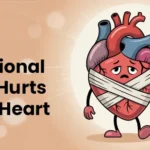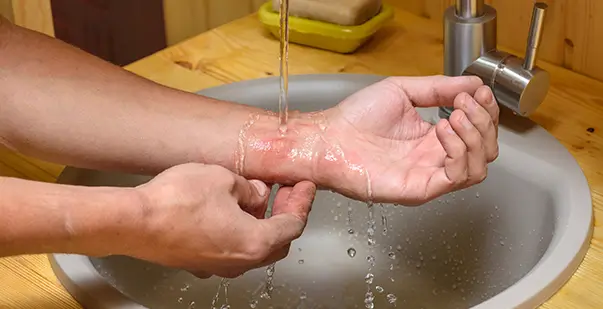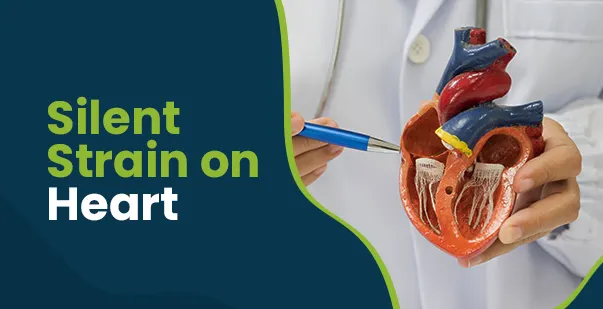Nearly 70% of burn injuries occur within the confines of a home. Despite their prevalence, misconceptions surround skin burn. Misconceptions are scary and can lead to improper first aid and delayed medical care. Hence, it is crucial to shatter the myths about skin burns and provide valuable insights to respond promptly to the common injuries. Learn common myths about skin burns:
What are the five signs of burning skin?
Feeling your skin burn can be scary and often has signs that show there are problems underneath. From the noticeable redness and warmth to prickling or tingling sensations, the signs are indicative of several conditions affecting the skin. Here are five signs of burning skin:
- Redness: Redness is often a sign of swelling, showing more blood going to the part that’s hurt. It can happen for different reasons, like being annoyed, getting sunburn, or having other skin issues.
- Warmth to the Touch: If your skin feels hotter than normal, it may mean more blood flow or swelling. This heat is often a reaction to pain or discomfort. It can be with problems like sunburn or some skin diseases.
- Tingling or prickling Sensation: Nerve involvement is often shown by a buzzing or pinching feeling. This feeling might be because of things like nerve problems, irritated nerves, or contact with stuff that causes a reaction in the nerves and senses.
- Pain or discomfort: When skin gets burned, it hurts or feels bad. The pain’s strength can be different for distinct individuals. It depends on what is causing it. Burns, skin problems, or nerve issues can cause this pain.
- Increased Sensitivity: Touch or pressure may hurt more if your skin feels the burn. This increased feeling can be a reaction to swelling, nerve problems, or some skin issues. This makes the troubled area more responsive and easily affected by things that stimulate it.
It’s crucial to remember that these signs can indicate different problems, such as skin issues, nerve diseases, or overall health conditions. If you keep getting bad symptoms or they get worse, it’s important to see a doctor. They will check what the problem is and give proper care.
Read More: First Aid during Asthma
Common myths about skin burns
The facts about burns are real, and here are some common myths about them. Learn myths of common skin burn to take the right course of action during emergencies:
Myth 1: Cold water makes burns worse.
Reality: Cold water does not hurt, but rather treats burns. The story saying that cold water makes burns worse is not true. So, we suggest using first aid by quickly cooling the burn to reduce pain and stop any further harm. The main thing is to use cool water (not freezing) for around 10–20 minutes. This helps quickly lower the skin temperature.
Myth 2: All burns get the same treatment.
Reality: Not all burns are the same, and treating them like that can be bad. Burns are sorted into different levels of seriousness. It’s important to know the differences between giving proper care. For instance, a small burn might only need easy first aid, but deep ones will probably require expert medical help.
Myth 3: Butter and creams help burn healing.
Reality: The idea that butter or creams help heal is wrong. In fact, using these substances can trap heat and make the burn worse. The best way is to use water on the burn and then put a clean, smooth bandage over it. Getting help from a doctor makes sure we get well quickly and safely.
Myth 4: Minor burns are not critical.
Reality: Thinking that small burns aren’t important is a dangerous idea. Burns that look small can still cause problems or infections if we don’t treat them right. It’s important to take care of the burn, put on a clean bandage, and get help if you need it. This will make sure healing happens correctly and reduce problems that could happen later.
Myth 5: Immediate blistering is always severe.
Reality: Unlike the rumor, burns don’t always cause skin to quickly blister if they are bad. Blisters can happen at different levels of burns. Checking how deep and big a burn is, is very important. This will help you decide if you can take care of it at home or need to see a doctor immediately.
Does first aid treat skin burns?
Yes, giving quick first aid for a skin burn is very important. Fast and righteous first aid can help lessen harm, relieve pain, and speed up healing. First aid steps for burns include using cool water to help the pain, putting a clean bandage on it, and going to see a doctor if the hurt is big. These steps are very important to stop more damage, and reduce swelling. It’s worth remembering that the exact first aid steps could change depending on how bad and why it happened.
Read More: First Aid of Peanut Allergies
Conclusion
It is crucial to understand the truth and bust the myths about handling burns. Cold water helps reduce pain and prevent further damage. Not all burns are the same and need distinct treatments. Bust the myths about skin burns for prompt response. Burns cannot be ignored, and it is crucial to take the right steps for a safer recovery. First aid plays a crucial role in helping burn victims. Prompt responses help cool down burning and provide protection to kickstart the healing process.









